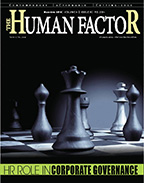DR. NALINI SALIGRAM FOUNDER & CEO, AROGYA WORLD Health is wealth at office too! The adage holds true for workplace as healthy ambience gets the best out of employees, says Dr. Nalini Saligram (Founder & CEO, Arogya World) Issue Date - 01/03/2013 |
 For decades, non-communicable diseases (NCDs) have not figured prominently in the health care agenda of countries across the world. Globally, the emphasis has been on reducing the threat of communicable diseases. Almost two out of three deaths in India and China are from NCDs. Deaths from NCDs are rising while deaths from communicable diseases are falling. Major life-threatening NCDs such as cardiovascular diseases, diabetes, chronic lung diseases and cancer – as a result of this neglect – have assumed alarming proportions lately. For decades, non-communicable diseases (NCDs) have not figured prominently in the health care agenda of countries across the world. Globally, the emphasis has been on reducing the threat of communicable diseases. Almost two out of three deaths in India and China are from NCDs. Deaths from NCDs are rising while deaths from communicable diseases are falling. Major life-threatening NCDs such as cardiovascular diseases, diabetes, chronic lung diseases and cancer – as a result of this neglect – have assumed alarming proportions lately.At a time when almost two-third deaths worldwide – 36 million out of 57 million – and 50 per cent deaths in India have been attributed to NCDs, it is high time that policymakers, health workers and the general public stand up and take note of it. The horrifying spectre of these ailments is ever-increasing due to undesirable lifestyle behaviours, including unhealthy eating habits, lack of physical activity and increased alcohol consumption. Our workforce is under tremendous pressure due to rising burden of NCDs. It is important that our workplaces, where an individual spends more than third of a day, emphasise on wellness by encouraging healthy eating and exercise; maintaining a stress-free environment with a good work-life balance; and discouraging tobacco consumption at workplace. Workplace wellness is one of the most important ways to check the growth of NCDs. The case for health-friendly work environment becomes stronger in a country like India where the incidence of these diseases is posing a challenge on many fronts. The importance of health amidst the daily grind Improper food habits at work, including irregular meals, junk food and outside food has become the forced choice of many employees, mostly due to work-related stress, busy lives or lack of options in office cafeterias. Long sitting hours in front of the computer make workers sluggish. The advent of technology at workplace including extensive reliance on social media has made individuals so lazy that they do not even stand to talk to the person sitting right across them. Moreover, large number of people are now taking to cigarettes and other tobacco products as a way to relieve stress. Tobacco is one of the biggest causes of many fatal illnesses, including cancer. All these add to the strain of the daily grind and lead to disturbed mental health, which is also fast becoming a big part of NCDs. Loss of human capital causes losses to companies. Such loss is also a huge economic burden on the country. Attrition and absenteeism among employees also increases due to various illnesses, leading to further losses in profitability. Human capital is at risk as demand for skilled workers outstrips supply. The amount of talent needed to sustain economic growth is growing both qualitatively and quantitatively, a trend that is likely to create significant talent gaps by 2020 and beyond (World Economic Forum, 2011). Human resource crunch is a talk of the town these days and companies are realising the fact that encouraging a healthy workplace as part of HR policies can go a long way in attracting and retaining the right talent. Illnesses such as diabetes, hypertension, cancer and cardiovascular diseases can easily be prevented if people are well-informed and aware of how to take care of their health. |
 Road to workplace wellness Road to workplace wellnessAs long as there is no measurement pertaining to certain vital benchmark such as healthy eating, physical activity, work-life balance in offices; organisations may not take the idea of workplace wellness too seriously. Such benchmark can act as incentives and give a purposeful direction to wellness programmes in companies. However, there is a good news. Companies these days are coming up with clear measurement indices and benchmarks to showcase tangible benefits to employers in ensuring health and wellness at work. Clear return on investment (ROI) estimates from workplace wellness programmes are needed in India. A recent Harvard-led meta-analysis identifies an average ROI of USD 3.27 for every dollar spent on wellness programmes (Baicker, Cutler & Song, 2010), resulting in a collective average saving of USD 700 per employee per year on health care costs. Workplace interventions in certain crucial areas can contribute to making employees healthy. Reducing intake of unhealthy foods, avoiding alcohol and encouraging physical activity are some measures by which the management can take care of their workers’ health. Such good workplace practices along with healthy public policies will go a long way in creating a healthy taskforce. Diseases like diabetes can easily be prevented by adhering to healthy lifestyle. It is important to note that Indians get cardiovascular diseases and diabetes almost 10 years earlier than their US counterparts. Around one million Indians have diabetes currently and the number are rising sharply. Tobacco is a major risk factor for most NCDs, mainly cancer, cardiovascular diseases and chronic lung diseases. Employees must be made aware of the risks involved in tobacco consumption. Employers also have a duty to ensure a healthy work-life balance for their employees since management support is important. Special care must be taken to avoid long working hours, rigid demands and unachievable targets. There has to be constant health monitoring of workers through regular health screenings and consultations with health care providers. Health camps, special camps for women, dental and eye assessments can contribute to employees’ health and wellness. A healthy workforce will not only produce good business results but also help the country prosper. |
Dr. Sailesh Mohan (PHFI) and Dr. Geeta Bharadwaj,Arogya World.
|
|
|



